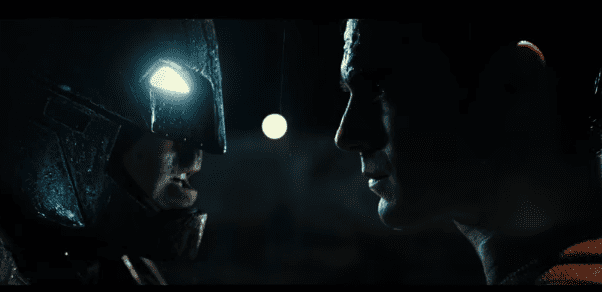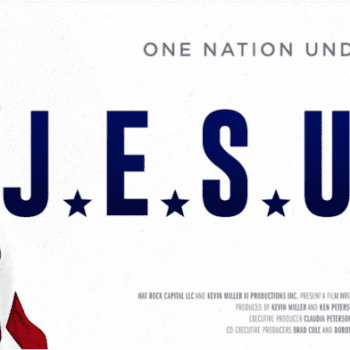
The critics have almost universally condemned Batman v. Superman. Personally, I think they’re right. Like many, I fell into plot holes about every 15 minutes and had a difficult time finding my way out. But for all the problems with the story line, Batman v. Superman asks some really good questions about theology, evil, and sacrifice.
There is an ancient sacrificial formula. According to René Girard, it goes back all the way to the founding of the first human cultures. Most concisely, the formula looks like this: whenever a community experiences a crisis of violence, it undoubtedly will survive by blaming a single person for its problems. Girard calls this person the scapegoat. The group finds unity by channeling its own violence against their scapegoat, who is accused of being evil, even a demon or a monster. The scapegoat is violently murdered and peace descends upon the group, but the peace is only temporary because the real problem of violence has never been solved.
When a crisis once again threatens the group, the process of sacrificial violence against an “evil” scapegoat repeats itself. As Girard states in a recently published conversation edited by Michael Hardin, Reading the Bible with René Girard: Conversations with Stephen E. Berry, “Sacrifice is repeating the event that has saved the community from its own violence, which is killing a victim.”* Soon, mythological stories and a theology emerges that claims that whenever the community experiences a crisis, the gods demand a violent sacrifice so that peace will return.
Indeed, this sacrificial formula is ancient, and yet it remains the dominant formula of our modern world. Its logic claims that sacrificial violence against an evil enemy is the surest way to peace. We see this logic in our politics, economics, religions, newscasts, and in the cinema. One of the most obvious examples of it is portrayed by Superman in the latest blockbuster film, Batman v. Superman.
Superman, Jesus, and Sacrifice
Superman is referred to as “God” throughout the movie. He seems to fit common assumption of the divine role quite nicely – Superman is all-powerful and miraculously seeks to save people from harm and death.
Many have suggested that Superman is a Christ-like figure. Superman and Jesus are similar in that they both seek to save humans from evil. The similarity becomes even stronger as they both save the world from evil through an act of sacrifice. But there is also a fundamental difference between the two. Superman saves the world through the ancient formula of sacrificial violence, whereas Jesus flips the ancient sacrificial formula and saves the world through an act of sacrificial nonviolence.
Superman and Evil
Near the end of the movie, Lex Luthor unleashes “Doomsday,” a monster that is a nearly perfect representation of evil. Superman, Batman, and Wonder Woman unite to destroy Doomsday, but the more they attack the evil monster, the more it feeds the beast with energy. With every violent blow, Doomsday grows stronger.
And that’s why Doomsday is a good example of evil. Paradoxically, the most reliable way to ensure the growth of evil is attempting to defeat it with violence. But violence only gives evil more energy. Tragically, we are witnessing this truth about evil in our current War on Terror. We attacked Saddam Hussein. When he was overthrown, al-Qaeda moved in to fill the power void. Once we weakened al-Qaeda, ISIS grew to become our greatest threat. There is a clear pattern emerging. U.S. violence against terrorists is only planting the seeds for more terrorists. Apparently, we’re on the verge of defeating ISIS, which only begs the question – What terrorist group will emerge next?
In the end, Doomsday isn’t a perfect example of evil. Superman soon realizes that he and the monster share Kryptonian DNA, which means they are both vulnerable to Kryptonite. Superman sacrifices himself by seizing a Kryptonite spear and impaling the weapon through Doomsday, killing the monster. Unfortunately for Superman, holding the Kryptonite weakens him just enough for Doomsday to impale him with a spike, leaving them both dead.
And, you know, since Superman destroyed Doomsday but didn’t destroy evil, there will be a sequel. And I will watch. Hopefully the next movie won’t have as many plot holes…
Jesus and Evil
Indeed, Superman and Jesus have the same goal of saving the world from evil. They also sacrifice themselves in order to defeat evil. We want a Superman-like-Christ who will keep us safe from evil, by any means necessary, including violence.
But we don’t have a Superman-like-Christ. We have a Jesus-like-Christ. Superman believes if he just has the right weapon – a spear made of kryptonite – then he can finally destroy evil. But Jesus didn’t believe that. He knew that no matter the weapon, violence only feeds the evil beast.
Jesus came face to face with evil when he went to the cross. It was his “Doomsday” moment. And like Superman, it was a sacrificial act that led to his death, but there’s an important difference. Jesus didn’t feed evil by using violence against it; rather, he starved evil by a radical act of forgiveness. From the cross he prayed that God would not avenge his persecutors. Instead, he prayed for their forgiveness, saying, “Father, forgive them, for they know not what they do.”
Conclusion
It’s interesting to note that Batman v. Superman was released in theaters on March 25, which happened to be Good Friday. Many think this was just a coincidence. That may be true, but what an odd coincidence to release the story of a god who dies to save the world from evil with an act of sacrificial violence on the day that Christians commemorate the death of Jesus, who saved the world from evil by sacrificing himself in an act of nonviolent love.
Batman v. Superman tells a contemporary mythical version of the ancient sacrificial formula. The heroic god-like figure saves the world by violently killing an evil enemy. This story has been told since the beginning of human culture. Unfortunately, it’s not working. Evil continues to threaten our world. With the advent of nuclear weapons and chemical warfare, violence threatens our world like never before.
But Jesus tells a different story. In a world where violence only feeds evil, Jesus offers the only alternative of nonviolence. Turn the other cheek. Love your enemies. Forgive those who persecute you.
This year, Good Friday put two stories before us. One was based on the ancient sacrificial formula of violence, the other was Jesus’s alternative sacrificial formula of nonviolent love. Which story will we choose?
Photo: Screenshot from YouTube.
*Michael Hardin, ed, Reading the Bible with Rene Girard: Conversations with Stephen E. Berry (Lancaster, PA: JDL Press, 2015), page 40.
Stay in the loop! Like Teaching Nonviolent Atonement on Facebook!











